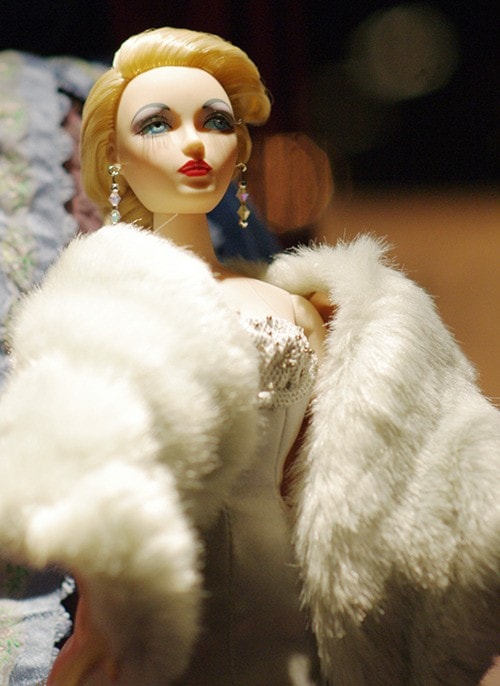Whether you call them dolls or prefer the more manly ‘action figures’ moniker, these collectibles take people back to their childhood.
For some, the hobby never ended.
In the case of Ginni Stieva, collecting dolls started when she was a child and continues to this day. In fact, she recently acquired an Italian fabric doll made in the 1930s and has included it in the Doll Extravaganza exhibit at the Sidney Museum.
“My grandmother also collected dolls and must have passed it on,” Stevia says.
Her collection spans the decades from the late 1800s and 1900s to today. China and Bisque head dolls to fabric and composite figures, to Barbie and Bratzilla — there’s a sampling from a variety of doll lines. There’s even a few full collections on display.
A consistent aspect of doll manufacturing and collecting, said Stieva, is the clothing. In any respects, she agrees, it’s all about the designs, the gowns, uniforms and outfits.
“French dolls (in the early 1900s) were kind of the premier ones,” she said, adding German dolls were considered next in line.
“There was a huge industry in France. There were people whose only job it was to make clothing for dolls.”
That hasn’t changed much today. There are entire collections that aren’t about the figure, but the designer and the clothing. The original Barbie dolls, Stieva added, were created for fashions. Other dolls have even sported clothing made by designers such as Bob Mackie — who make clothing for real people.
“Barbie was designed so that the clothes made for it would hang on it well,” she explained. “It was never meant to be a true representation of a woman’s body.”
The thin shape of a Barbie doll has been the centre of a lot of controversy when it comes to body-image issues — even as recent as this year when the popular doll made it onto the pages of a Sports Illustrated Swimsuit issue.
American Girl Dolls, another line of toys, were part of a movement to create more realistic depictions of the female form. Yet, many dolls even now cater to fashion and marketing, not necessarily realism.
Stieva pointed out dolls were at one time very fragile and quite expensive, meaning only the wealthy could afford them. As materials changed from China to composite (basically pressed sawdust) or fabric, accessibility changed. Hand-made dolls gave way to mass-production and plastics. They have come full circle back to fabrics with lines such as Cabbage Patch Dolls and Groovy Girls.
Early dolls started out fairly generic in their look, and clothes were always treated as a way to introduce young girls to sewing. Stieva said that’s how she learned how to sew. As marketers got a hold of them, dolls began to take on the images of real people or fictional characters. They’ve been spun out of Saturday morning cartoons, royal weddings, books and even the movies. Action figures, too, are included in the exhibit — G.I. Joe, Star Trek, Iron Man and more.
Alongside Stieva’s collection are dolls from Sidney doll maker Romona King and a few on loan from other collectors.
Running June 5 to July 30, the Doll Extravaganza is hitting the streets for Sidney. Stieva said local businesses will have dolls in their windows as part of a scavenger hunt contest.
Another contest will have people scouring the museum for tiny doll accoutrements. There is also a doll dressmaking event in the works and two days dedicated to specific dolls: American Girl Doll Day on June 21 and Barbie Day on July 24. Be among the first 75 people to bring in your doll of the same name or similar size and win a special gift.
To find out more about the exhibit, visit www.sidneymuseum.ca.
editor@peninsulanewsreview.com
